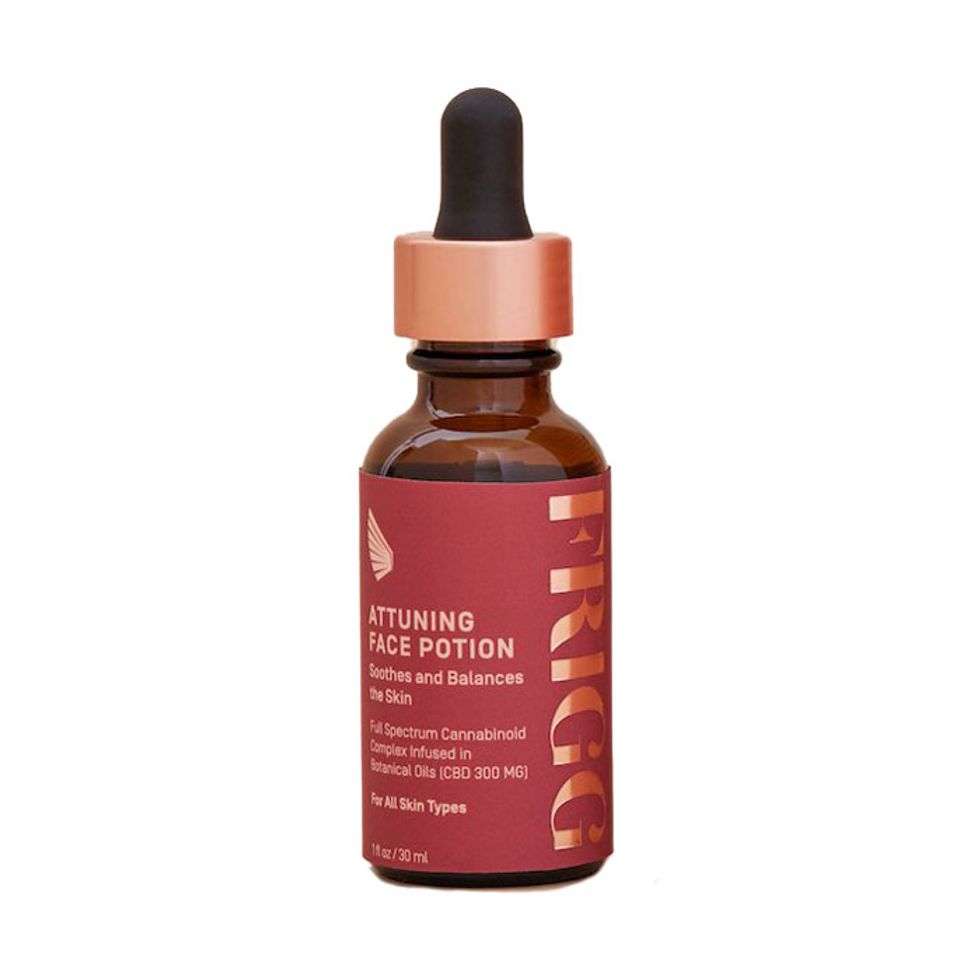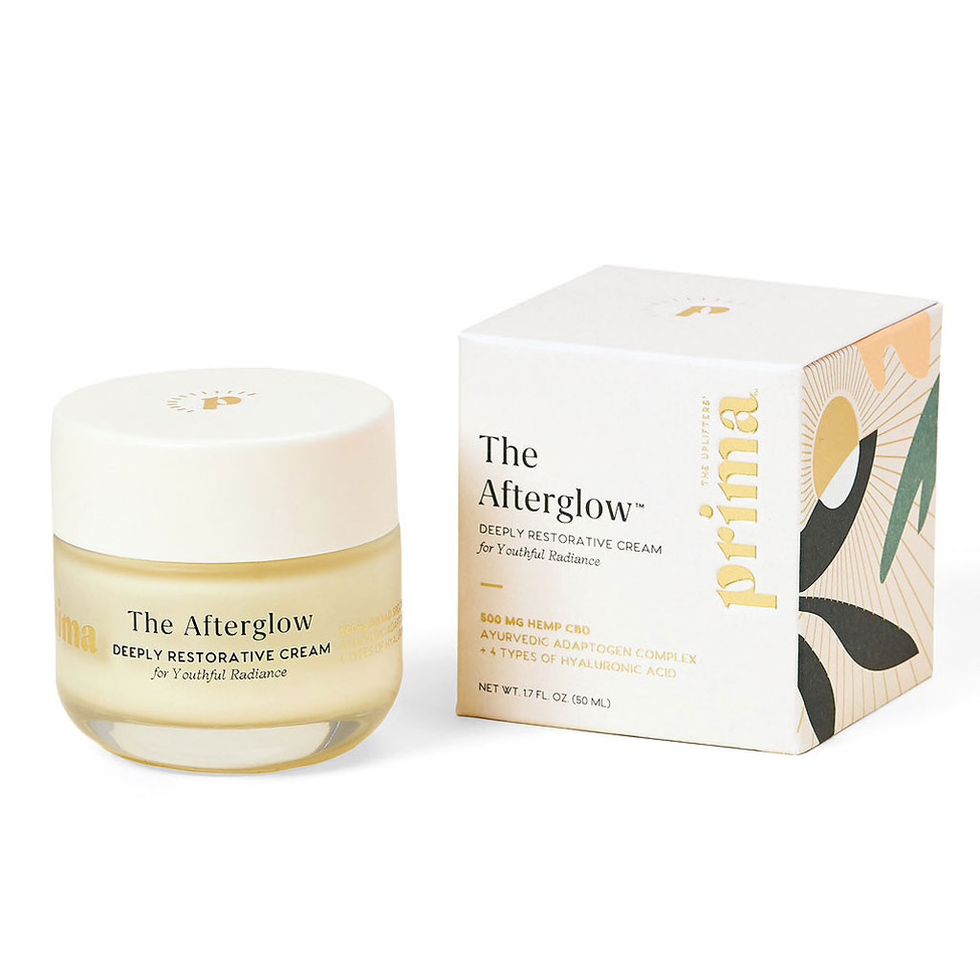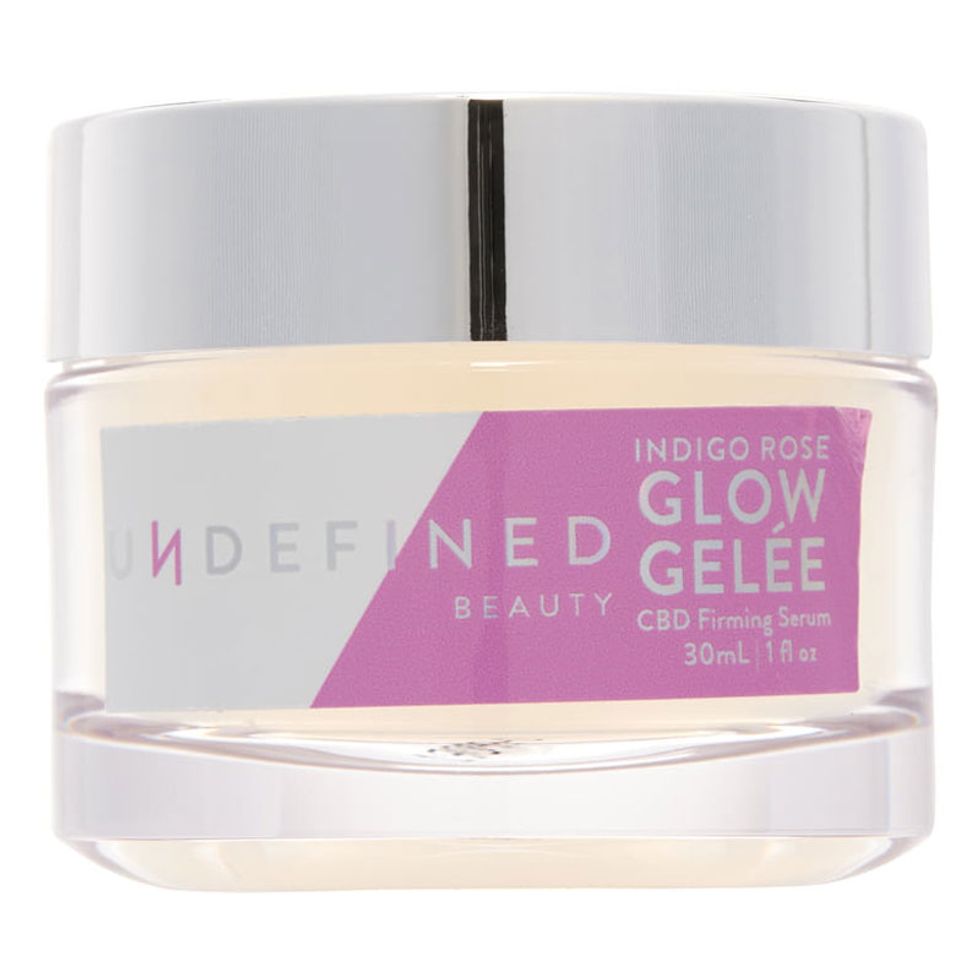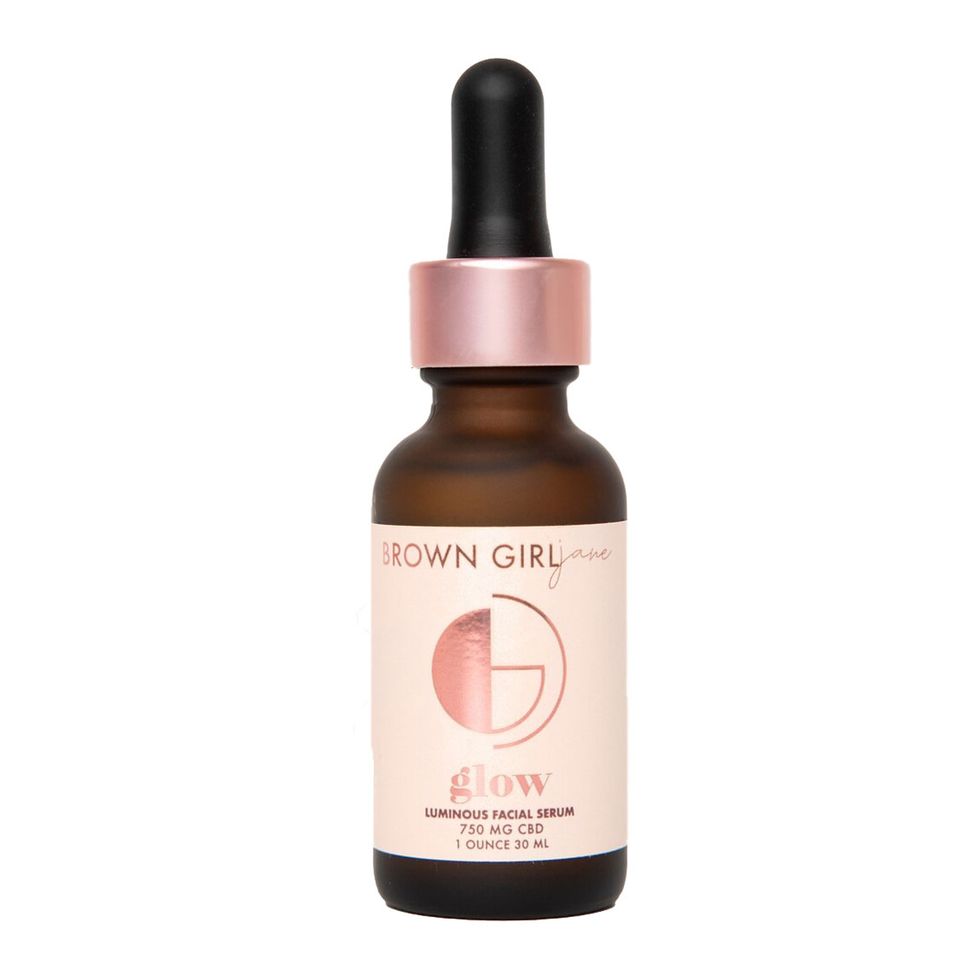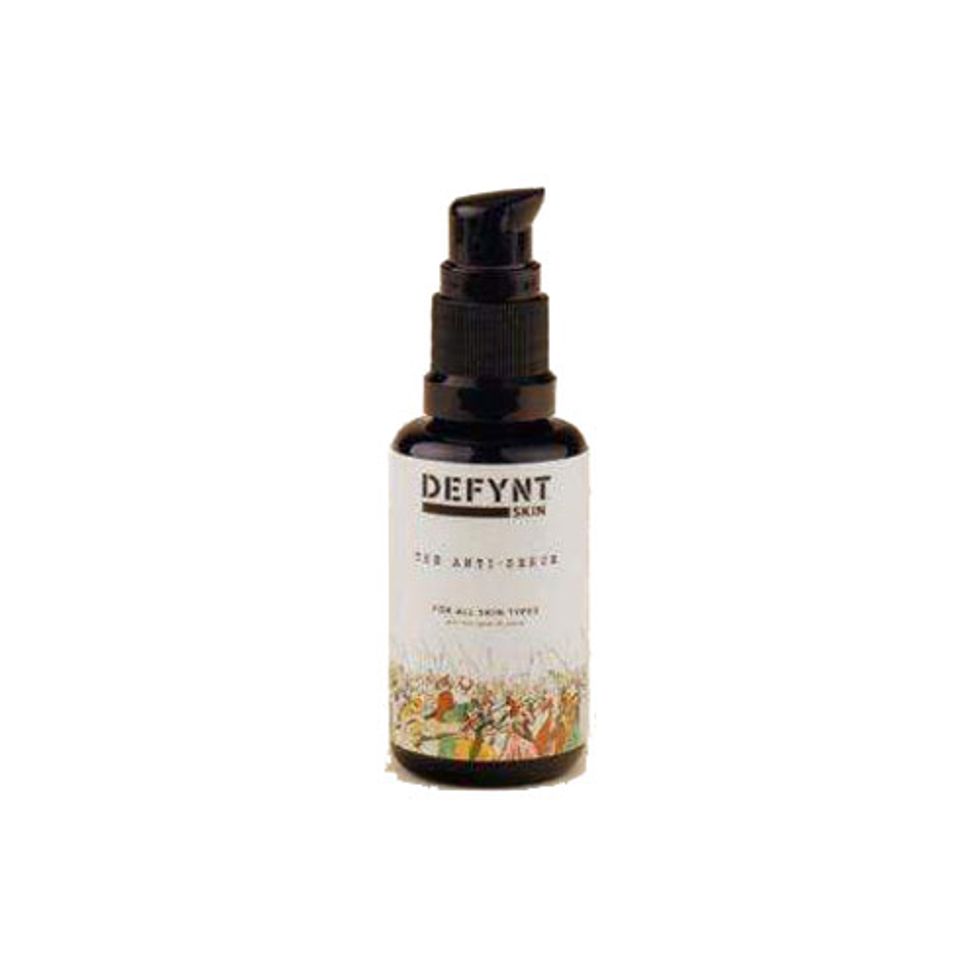Skin
CBD: Skin-Care Miracle, or Marketing Myth?
The level of hype is, uh, high. Here’s what to believe.
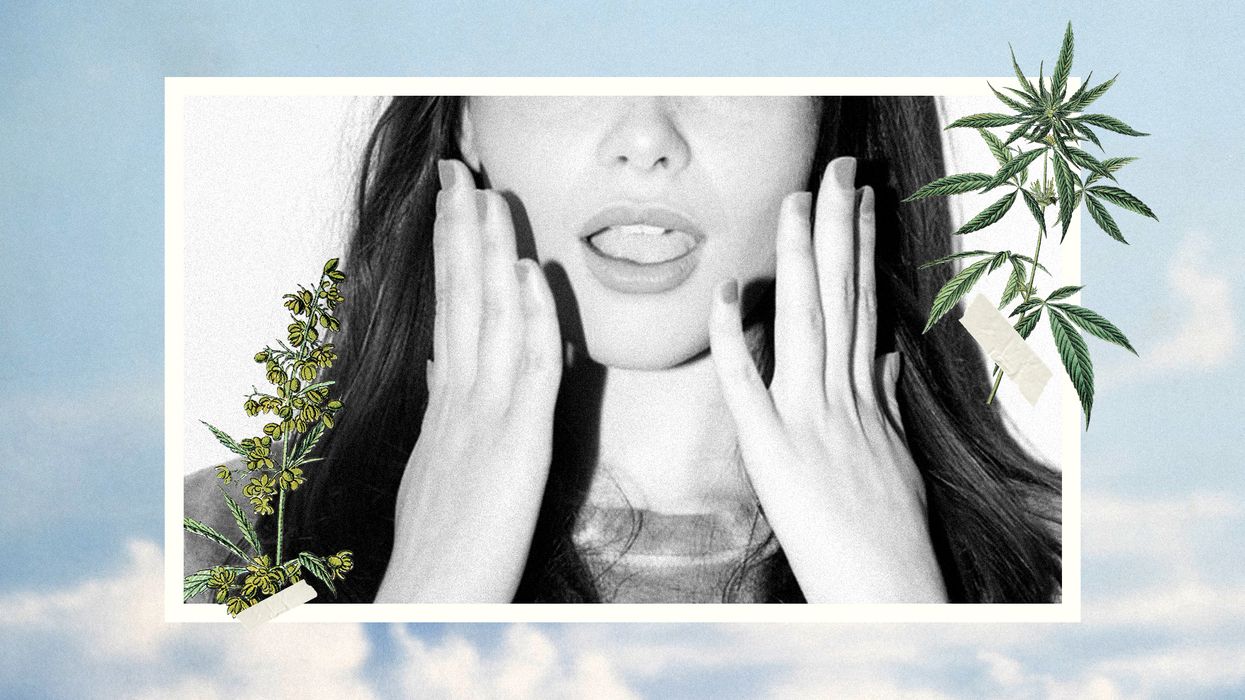
07 September, 2020
10 November, 2021
Graphic
Rachel Pickus
Hey, thanks for being here. I know you’ve been bombarded with clickbait headlines about CBD for years now—first framing the hemp-derived compound as a topical pain reliever, then as an ingestible anxiety aide, and most recently as a skin savior. And yet…you continue to click. You clicked on this one! (Again, thanks for that.) Why, though? Why are you still reading? Why am I still writing? Why do we care?
Say it with me: Cannabis Culture.
Sure, CBD is a lovely skin-care ingredient. Dermatologists agree that it has the potential to calm inflammation, balance oil production, soothe eczema, and more. While all of that is wonderful, one has to wonder why other derm-approved naturals haven’t earned the same kind of attention—like spearmint tea, which is shown to lessen acne lesions by 51 percent over three months (on par with oral antibiotics, minus the side effects), or Manuka honey, used in hospital burn units for its skin-healing power.
The answer, of course, is that CBD comes from cannabis plants. It exists in close proximity to marijuana. It’s “edgy,” it’s cool, it’s inherently clickable. Simply put: CBD is easy to capitalize on—and where there’s money, there’s usually misinformation, marketing myths, and overblown claims of miraculousness.
To cut through the BS of CBD, read on.
Say it with me: Cannabis Culture.
Sure, CBD is a lovely skin-care ingredient. Dermatologists agree that it has the potential to calm inflammation, balance oil production, soothe eczema, and more. While all of that is wonderful, one has to wonder why other derm-approved naturals haven’t earned the same kind of attention—like spearmint tea, which is shown to lessen acne lesions by 51 percent over three months (on par with oral antibiotics, minus the side effects), or Manuka honey, used in hospital burn units for its skin-healing power.
The answer, of course, is that CBD comes from cannabis plants. It exists in close proximity to marijuana. It’s “edgy,” it’s cool, it’s inherently clickable. Simply put: CBD is easy to capitalize on—and where there’s money, there’s usually misinformation, marketing myths, and overblown claims of miraculousness.
To cut through the BS of CBD, read on.
What Is CBD?
CBD stands for cannabidiol, “one of many naturally occurring molecules called ‘cannabinoids’ found in both hemp and [marijuana] plants,” Laura White, a North Carolina–based hemp farmer and founder of Soul Addict, tells Coveteur. Both of these CBD-producing plants belong to the cannabis family; scientifically, hemp is any cannabis sativa plant that produces less than 0.3 percent THC, meaning it can’t get you high. Even if the THC content is only 0.4 percent, which still isn’t likely to get you high, it’s still classified as marijuana.
The Relationship Between CBD & Cannabis
“The only difference between [marijuana] and hemp is a legal one,” says Kimberly Dillon, the founder of Frigg Wellness. Marijuana plants contain higher levels of THC, the not-fully-legal psychoactive compound that gets you high, and hemp plants contain little to no THC. This is why almost all of the CBD in consumer goods is derived from hemp.
Even though CBD products do not and will not get you high—nope, not ever—beauty brands often rely on this familial marijuana-hemp relationship in their marketing materials. See: the exhausting and endless parade of puns involving the words “kush,” “dank,” “high,” “dope,” and “take a hit.”
Uh, Isn’t That a Little Problematic?
So glad you asked. Yes, it is! When (mostly white-owned) beauty brands use CBD’s proximity to cannabis to sell makeup and skin care, it capitalizes on a system that disproportionately punishes people of color for weed-related drug offenses. As the American Civil Liberties Union reports, “Despite roughly equal usage rates, Blacks are 3.73 times more likely than whites to be arrested for marijuana.”
On one hand, “the CBD movement is normalizing the plant, which has been historically demonized through racially provoked propaganda and reframing it as a plant-based wellness solution instead of a drug,” Dorian Morris, the self-described Black, queer, female founder of Undefined Beauty, tells Coveteur. On the other, “we also can’t ignore the lives and communities that have been permanently impacted by the War on Drugs.”
“If you are putting CBD on your body, you should at least acknowledge that countless people paid the price for that—including the LGBTQ activists that pushed for legalization, along with the number of Black and brown people and low-income folks in prison,” adds Dillon. More on how to consciously consume CBD later.
But First, How CBD Works
“Each of us has what we call an endocannabinoid system found throughout our body,” White explains. “Its main function is to create bodily balance, aka homeostasis, from our mood to sleep to skin function.” (Yes, this means your body produces its own version of CBD.) As a phytocannabinoid, cannabis-derived CBD “can bind certain receptors in the brain and various other areas of the body,” says cosmetic chemist Kelly Dobos—including the skin, which has its own endocannabinoid system, complete with cannabinoid receptors. Theoretically, when you slather CBD on your skin, it interacts with said receptors to create homeostasis.
So, Does CBD Skin Care Deserve All the Hype?
Yes. But also, no.
According to dermatologists and cosmetic chemists, CBD skin care is worthy of some of the attention it’s garnered. Although “large, randomized studies with CBD are lacking,” says Dr. Aanand Geria, a board-certified dermatologist with Geria Dermatology, the studies that have been conducted “show that CBD might normalize keratinization—meaning pores are less likely to be clogged—possibly lead to fewer wrinkles, and [has] anti-inflammatory activity.”
“It has been studied as a treatment for a variety of skin issues including eczema, psoriasis, and even acne,” adds board-certified dermatologist Dr. Joshua Zeichner in an email to Coveteur. “It has calming and hydrating effects, and there is some data to suggest that it may inhibit oil production.”
This is all impressive, if not unique. “Plant healing is not new; it is ancestral,” as Dillon says. Or, in more scientific terms, “A great number of effective and commonly used pharmaceuticals, like aspirin and its analog, salicylic acid, have their roots in botanical sources,” says Dobos. CBD is just one of many effective, plant-based skin-care solutions—a miracle of nature, but not necessarily a miracle to worship above all others.
Hemp Seed Oil Is Not the Same as CBD
Many brands pushing so-called “dope” and “dank” beauty products don’t formulate with CBD at all; instead, they formulate with hemp seed oil (aka cannabis sativa seed oil, not CBD). The practice is known in the industry as “weedwashing,” and it aims to cash in on CBD’s popularity without putting up the cash for actual CBD. After all, hemp seed oil is easier to harvest, more affordable, and conveniently labeled as “cannabis” on ingredient lists. Why bother with CBD when there’s money to be made and consumer confusion on which to capitalize?
“While hemp seed oil is a part of the same plant species, hemp seeds are from the male plants…and CBD can only be produced by female plants that can grow flowers or ‘buds,’” White tells Coveteur. To understand their functional differences, think of CBD as an “active” ingredient and hemp seed oil as an “inactive” ingredient. “CBD is an active ingredient in that it works with our skin’s cannabinoid receptors and is being used to physically change something within our skin’s natural response—it’s working with our skin in an intimate manner,” the Soul Addict founder shares. Comparatively, hemp seed oil is inactive and basically just sits on the skin’s surface.
That’s not to say hemp seed oil isn’t very nice. “Hemp seed oil is rich in Omega-3 and Omega-6 fatty acids and is therefore used primarily as a moisturizing facial oil,” Dr. Geria says, while Dr. Zeichner adds, “It has been used for decades because of its moisturizing properties, but is now gaining popularity, likely because of the [partial] legalization of marijuana.” If you’re looking for an ingredient to support your skin barrier and lock in hydration, hemp seed oil is it. If you’re looking for an ingredient that contains CBD, hemp seed oil is not the answer.
The Type of CBD Matters
“There are three types of CBD: full spectrum, broad spectrum, and isolate,” White says. Full-spectrum hemp extract is also known as “whole plant hemp extract,” indicating that the properties of the whole hemp flower remain intact. Broad-spectrum hemp extract is similar, except it’s had its THC removed. “Isolate means that you keep processing down from your full cannabinoid profile hemp flower extract to only the CBD molecule, nothing else,” the founder explains.
Studies indicate that full- or broad-spectrum hemp extracts are significantly more effective than isolated CBD. In what researchers have dubbed the “the entourage effect,” the idea is that “multiple chemical components of the plant lead to increased efficacy,” Dobos says. In layman’s terms: CBD is a team player. In order to reach its full potential, it needs to be surrounded and supported by all the other compounds in its hemp plant family, the way that nature intended. “It’s scientifically backed up that 100 milligrams of single-molecule CBD isolate simply does not come close to the potency of 100 milligrams of full-spectrum CBD,” White says.
Despite this widely held belief, it’s very common for beauty brands to opt for isolated CBD instead of the full- or broad-spectrum stuff. “The main reason most skin-care companies opt for an isolate is because formulations are easier,” according to White. “Working with a full-spectrum CBD is harder because the cannabis smell and texture could take a lot longer to mimic a product that will sell in today’s texture-obsessed beauty market.” Basically, CBD isolates make for pretty-smelling and nice-feeling but probably not very potent products. Experts recommend investing in full- or broad-spectrum CBD to truly get your money’s worth.
Full Spectrum & Broad Spectrum CBD Contain Other Cannabinoids, Too
“When you’re ‘growing CBD,’ what you’re really growing is a type of cannabis flower full of all types of different therapeutic cannabinoids: CBD, CBC, CBG, CBN, and more,” White says. “Some flowers have higher or lower percentages of each, but CBD and THC will always be the most abundant.” The lesser cannabinoids contribute to the aforementioned entourage effect, and some have been studied for their individual properties, too. CBC is thought to be anti-inflammatory (find it in Plant People Revive Botanical Serum), CBG is praised for locking in moisture (it’s used in Lab to Beauty’s line), and CBN may regulate skin cell renewal (try it via MASK’s Anti-Aging Sheet Mask). It’s rare that beauty brands isolate CBC, CBG, or CBN for use in cosmetics—these are almost exclusively used alongside CBD and can be found in any full- or broad-spectrum formula.
How Much CBD Should Be In a Skin-Care Product?
There’s currently not a lot of data available on how much CBD to use in order to reap its beauty benefits. “Concentrations noted in research publications with CBD for skin-care start as low as 0.1 percent, but many of these studies are in vitro investigations on skin cells,” Dobos says. “I expect we’ll be seeing more studies and patents published in the near future that provide us with optimized concentrations for specific applications.”
White suggests looking for at least 25 milligrams or more of full-spectrum CBD per ounce of product—not that a label that reads “25 milligrams of CBD” will necessarily have 25 milligrams of CBD. “One survey of purchased products, mostly supplements and edibles, over 60 percent did not meet the claimed level of CBD, and some contained none at all,” Dobos shares. “We can surmise that as the demand for these types of products increases, so does the potential to mislead consumers.”
Look for Third-Party Verification
To ensure that the CBD skin care you’re spending your hard-earned money on is legit, look for at least some level of third-party verification. This could be through a Certificate of Authenticy (Beboe Therapies offers COAs for all of its products), independent lab tests (Kush Queen makes these available on its site), or a safety certification from an organization like the Environmental Working Group (Prima is the first CBD brand to be EWG Certified).
One third party you won’t see approval from is the United States Food & Drug Administration. When it comes to cosmetics, including CBD-infused cosmetics, the FDA operates on a post-market regulatory system; meaning it does not screen products for safety or efficacy before they’re made available for sale. It’s unlikely that this system, which has been in place since the founding of the FDA, will change. However, “In March, the FDA announced a partnership with the University of Mississippi to assess allergic potential and skin penetration of both THC and CBD,” Dobos says.
It’s Possible to Have a Bad Reaction to CBD
CBD is generally considered safe and soothing, but “as with any skin-care product, if you develop any redness, burning, or stinging, then remove the product right away,” Dr. Zeichner says. Dobos notes that some terpenes, a class of aromatic molecules that give cannabis its distinctive smell, are known allergens. “These include limonene and linalool and are specifically noted on cosmetic ingredient statements to alert those with known sensitivities so they can avoid exposure,” the chemist says. If you’re new to the CBD game and are worried about having a reaction, it’s best to start with a small patch test, rather than applying the product to your entire face.
How to Consciously Consume CBD Products
Being mindful of where and how you spend your money is always important—as the saying goes, you vote with your dollar—but it is “especially important in the cannabis industry, which was built off the backs of Black and brown communities...who are being denied access to the commercialization opportunity now that the regulatory landscape has shifted,” Morris tells Coveteur. In order to shift the stigma and give back to her community, Morris pairs each Undefined Beauty product collection with a “social impact mission.” Her latest focus? Addressing the prison industrial complex and providing employment opportunities for previously incarcerated women.
“As consumers, we can support diverse founders and brands that are progressing the conversation,” she adds, noting Brown Girl Jane, Potli, Homebody, Calivolve, and Taylor & Tess as BIPOC-owned brands available through her Undefined Collective. If there’s another CBD brand on your radar, Dillon suggests not only doing research into its products, but its people. “Find out who is behind it,” the Frigg founder says. “Do they share the same values as you? Be proactive on where your dollar goes and to whom.”
Even if you don’t plan on buying or using CBD skin care, there’s still work to be done. “I would ask that people consider voting for legalization,” Dillon says. “The legalization of cannabis, and by extension, hemp, would represent one of the greatest social justice issues of our time. Legalization would allow for thousands of people to vote again, to pursue jobs without the ‘felon’ stigma, to keep their kids, to have access to jobs. How many times in life will a brand-new industry emerge? The wealth and job creation on a global level will be a defining moment of our society.”
Ahead, shop the CBD skin care that cannabis culture helped create—then head to Marijuana Policy Project to help create a more equitable cannabis culture.

